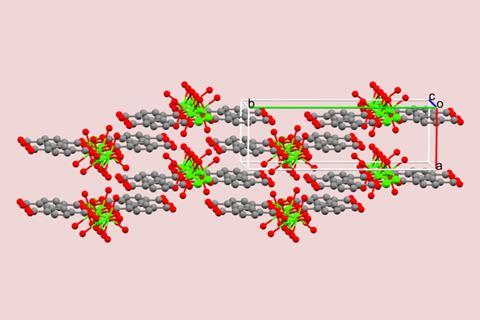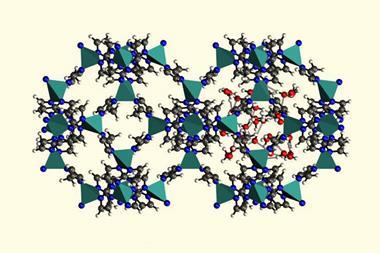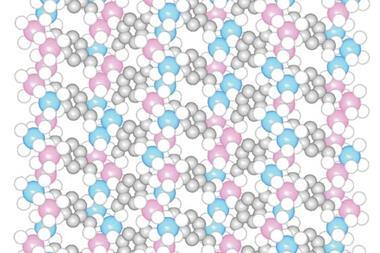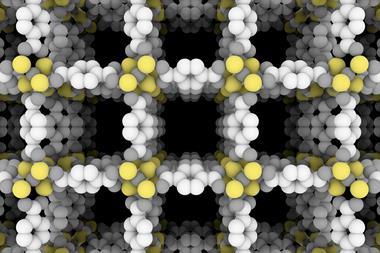Scientists in the UK have made a metal–organic framework out of chicken eggshells and a compound that can be reclaimed from plastic bottles.

MOFs are porous crystalline materials that consist of metal centres connected by organic linkers. Calcium-based MOFs have performed well in studies evaluating their ability to separate mixtures of noble gases and alkane isomers. Their biocompatibility and low toxicity also make them promising candidates for drug delivery and biological applications.
Now, Darren Bradshaw and colleagues from the University of Southampton have shown that ball-milled chicken eggshells can replace commercial CaCO3 as the calcium source when synthesising calcium-based MOFs. They also showed that benzene-1,4-dicarboxylate (BDC) reclaimed by hydrolysing PET (polyethylene terephthalate) plastic bottles can serve as an organic linker between calcium sourced from eggshells. Shaking the two precursors together in water for 20 minutes gave rise to a Ca(BDC)(H2O)3 framework.
The researchers say the combined use of sustainable synthesis methods and green resources is likely to become much more commonplace as MOF research matures and shifts towards industrial applications.
References
T Crickmore et al, Chem. Comm., 2021, DOI: 10.1039/d1cc04032d












No comments yet